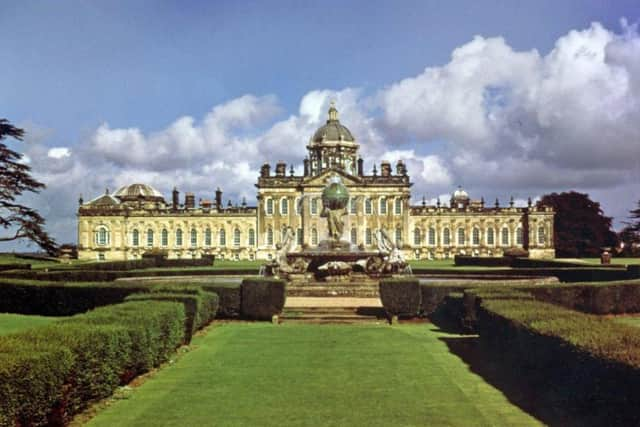Castle Howard unveils 15-year masterplan to tackle £50m restoration deficit
As managers of Castle Howard issued a press release, describing its strategy as “ambitious but necessary” to tackle its estimated £50m restoration deficit, there was a palpable air of anxiety as scores of residents in nearby Slingsby met in the village church to discuss how to respond to the 9,000-acre estate’s aspirations.
The meeting was shown a map of the village featuring several surrounding fields which Castle Howard has suggested as having potential for housebuilding as Ryedale District Council calls for possible development areas as it reviews its Local Plan.
Advertisement
Hide AdAdvertisement
Hide AdResidents told the meeting while they wanted to see more affordable housing developed, the reason they lived in the village was because of the sense of open space and beautiful views.


The meeting heard villagers question whether Castle Howard would seek to maximise profits by minimising the number of properties with local occupancy clauses and allowing them to be bought as second homes.
As Castle Howard rents numerous properties, places business with over 1,000 local firms and directly employs over 120 local people, the meeting heard many residents felt unable to voice their views.
However, Sinnington councillor Simon Thackray has urged “small village communities to rise up and come together in defence of their future”, saying extra development areas in the Ryedale Local Plan could see the district’s largest villages overdeveloped and communities decimated.
Advertisement
Hide AdAdvertisement
Hide AdDespite this, Castle Howard estate says it is aiming to respond to local needs with the provision of housing, village services and local employment opportunities, while responding to a range of current environmental issues by evolving the way it approaches land management.
The estate’s newly-appointed chief executive, Jasper Hasell, said fresh challenges and opportunities were calling for “a bold and integrated strategy to ensure the delicate balance between continuity and change”.
He said: “Against the background of rising restoration costs, the impact of Covid-19, the climate and biodiversity emergencies, and lack of rural housing and services, what we do now not only helps secure the future of Castle Howard, but also ensures a positive legacy for our local communities and the wider environment in which they live, work and play.”
Alongside housebuilding, the estate’s strategy aims to see it become a national centre of excellence and training hub for crafts and conservation skills, breathing new life into heritage buildings, transforming them into overnight accommodation and recreational facilities.
Advertisement
Hide AdAdvertisement
Hide AdCastle Howard said it would also invest in an additional range of experiences to attract, inform, and inspire visitors and further increase their contribution into the local economy.
The strategy will also overhaul land management practices to protect and regenerate the biodiversity of the Howardian Hills, improving soil health and water management and expanding access to green spaces for public health, wellbeing and education.
Underpinning the strategy will what the estate describes as “purposeful development”, to include new housing and facilitating additional enterprises, employment and connectivity to help transform villages into thriving places for people to live, work and play.
The masterplan states every pound raised through developments and expanded business enterprises will be reinvested into the conservation of the buildings, land and further enhancing local communities.
Advertisement
Hide AdAdvertisement
Hide AdNicholas Howard, who took over the reins of the estate eight years ago, said: “We passionately believe in our purpose to secure a restored and flourishing estate that supports thriving communities and a healthy environment.
“Our aim is for future generations to look back at what we started and appreciate the condition of the buildings and environment we pass on to them.”
